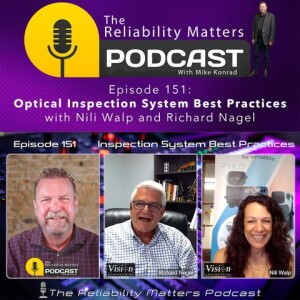
- Podcast Features
-
Monetization
-
Ads Marketplace
Join Ads Marketplace to earn through podcast sponsorships.
-
PodAds
Manage your ads with dynamic ad insertion capability.
-
Apple Podcasts Subscriptions Integration
Monetize with Apple Podcasts Subscriptions via Podbean.
-
Live Streaming
Earn rewards and recurring income from Fan Club membership.
-
Ads Marketplace
- Podbean App
-
Help and Support
-
Help Center
Get the answers and support you need.
-
Podbean Academy
Resources and guides to launch, grow, and monetize podcast.
-
Podbean Blog
Stay updated with the latest podcasting tips and trends.
-
What’s New
Check out our newest and recently released features!
-
Podcasting Smarter
Podcast interviews, best practices, and helpful tips.
-
Help Center
-
Popular Topics
-
How to Start a Podcast
The step-by-step guide to start your own podcast.
-
How to Start a Live Podcast
Create the best live podcast and engage your audience.
-
How to Monetize a Podcast
Tips on making the decision to monetize your podcast.
-
How to Promote Your Podcast
The best ways to get more eyes and ears on your podcast.
-
Podcast Advertising 101
Everything you need to know about podcast advertising.
-
Mobile Podcast Recording Guide
The ultimate guide to recording a podcast on your phone.
-
How to Use Group Recording
Steps to set up and use group recording in the Podbean app.
-
How to Start a Podcast
-
Podcasting
- Podcast Features
-
Monetization
-
Ads Marketplace
Join Ads Marketplace to earn through podcast sponsorships.
-
PodAds
Manage your ads with dynamic ad insertion capability.
-
Apple Podcasts Subscriptions Integration
Monetize with Apple Podcasts Subscriptions via Podbean.
-
Live Streaming
Earn rewards and recurring income from Fan Club membership.
-
Ads Marketplace
- Podbean App
- Advertisers
- Enterprise
- Pricing
-
Resources
-
Help and Support
-
Help Center
Get the answers and support you need.
-
Podbean Academy
Resources and guides to launch, grow, and monetize podcast.
-
Podbean Blog
Stay updated with the latest podcasting tips and trends.
-
What’s New
Check out our newest and recently released features!
-
Podcasting Smarter
Podcast interviews, best practices, and helpful tips.
-
Help Center
-
Popular Topics
-
How to Start a Podcast
The step-by-step guide to start your own podcast.
-
How to Start a Live Podcast
Create the best live podcast and engage your audience.
-
How to Monetize a Podcast
Tips on making the decision to monetize your podcast.
-
How to Promote Your Podcast
The best ways to get more eyes and ears on your podcast.
-
Podcast Advertising 101
Everything you need to know about podcast advertising.
-
Mobile Podcast Recording Guide
The ultimate guide to recording a podcast on your phone.
-
How to Use Group Recording
Steps to set up and use group recording in the Podbean app.
-
How to Start a Podcast
-
Help and Support
- Discover

Two episodes ago, in RM 149, we talked all about automated optical inspection. Today we're exploring the impact of less automated inspection Technology, that being optical microscopes.
From commercial, class 1 electronics to high-reliability class 3 electronics, the intricate electronic devices we rely on daily are assembled with astonishing precision. This precision wouldn't be possible without the aid of advanced optical microscopes. These remarkable instruments allow technicians and engineers to inspect, analyze, and ensure the quality of electronic components down to the minutest detail.
In this episode, we'll uncover how optical microscopes have impacted electronic assembly, enhancing productivity, ensuring reliability, and driving innovation.
One of the unique benefits microscopes provide, particularly in hand soldering applications, is the ability to view and solder the assembly under high magnification through the microscope. Obviously, this is not something any AOI system can perform.
But microscopes are not limited to soldering applications. One of the most critical applications of optical microscopes in the electronic assembly industry is the inspection of circuit assemblies for quality assurance. Circuit assemblies are the heart of many products, comprising numerous, highly miniaturized components and connections that must be flawlessly integrated. Even the smallest defect, such as a microscopic crack or an improperly soldered joint, can lead to significant malfunctions or failures.
Optical microscopes enable detailed inspection of these assemblies, allowing quality control professionals to identify and rectify issues that would be invisible to the naked eye.
By providing high-resolution images and magnification, these microscopes help in detecting defects, ensuring correct alignment and polarity of components, and verifying the integrity of solder joints. This meticulous inspection process is crucial for maintaining the reliability and performance of electronic devices, ultimately ensuring customer satisfaction and, in many cases, safety.
We'll hear from two industry experts who will share insights on the latest technological advancements and how these tools are indispensable in maintaining the high standards of modern electronics. Nili Walp is marketing manager at Vision Engineering, a manufacturer of microscopes design for various industries, including the Electronics assembly industry, where she has worked for over eight years. Walp earned a bachelor's in communications from Boston University.
Richard Nagel is vice president of sales and marketing at Vision Engineering where he has worked for over 21 years. Nagel and Walp will share insights on the latest technological advancements and how these tools are indispensable in maintaining the high standards of modern electronics.
Chapters:
00:00:00 - Impact of Optical Microscopes on Electronic Assembly
00:02:18 - Latest Technological Advancements with Industry Experts.
00:04:49 - Vision Engineering's Origins and Innovations
00:07:40 - The Invention of the Boroscope
00:09:57 - The Importance of Magnification in Electronics Assembly
00:12:34 - Advancements in Microscope Technology
00:15:07 - The Game Changer in Microscopy: Eyeless Microscopes
00:17:34 - Ergonomic Advancements in Microscopy
00:20:06 - Advancements in Microscope Technology
00:22:29 - Applications of Microscope Technology
00:24:56 - Types of Microscopes in the Biological Sciences Industry
00:27:38 - Microscope Applications and Considerations
00:30:20 - The Value of Human Intuition in Inspection
00:33:06 - Common Challenges in Microscopy
00:35:52 - Illumination for Surface Texture
00:38:30 - Common mistakes when purchasing microscopes
00:40:59 - Choosing the Right Microscope for Your Needs
00:43:35 - Microscope Illumination Techniques and Considerations
00:45:57 - Practical Magnification Levels in Electronics Industry
00:48:23 - Purchasing the Right Microscope
00:50:58 - Vision Goggles in Virtual Reality and Augmented Reality
00:53:43 - Demand for Technological Advancements in Younger Generations
00:56:19 - Ergonomics and Productivity in the Workplace
00:58:47 - Learn more about reliability matters podcast
More Episodes
 2024-12-11
2024-12-11
 2024-10-29
2024-10-29
Create your
podcast in
minutes
- Full-featured podcast site
- Unlimited storage and bandwidth
- Comprehensive podcast stats
- Distribute to Apple Podcasts, Spotify, and more
- Make money with your podcast
It is Free
- Privacy Policy
- Cookie Policy
- Terms of Use
- Consent Preferences
- Copyright © 2015-2025 Podbean.com




